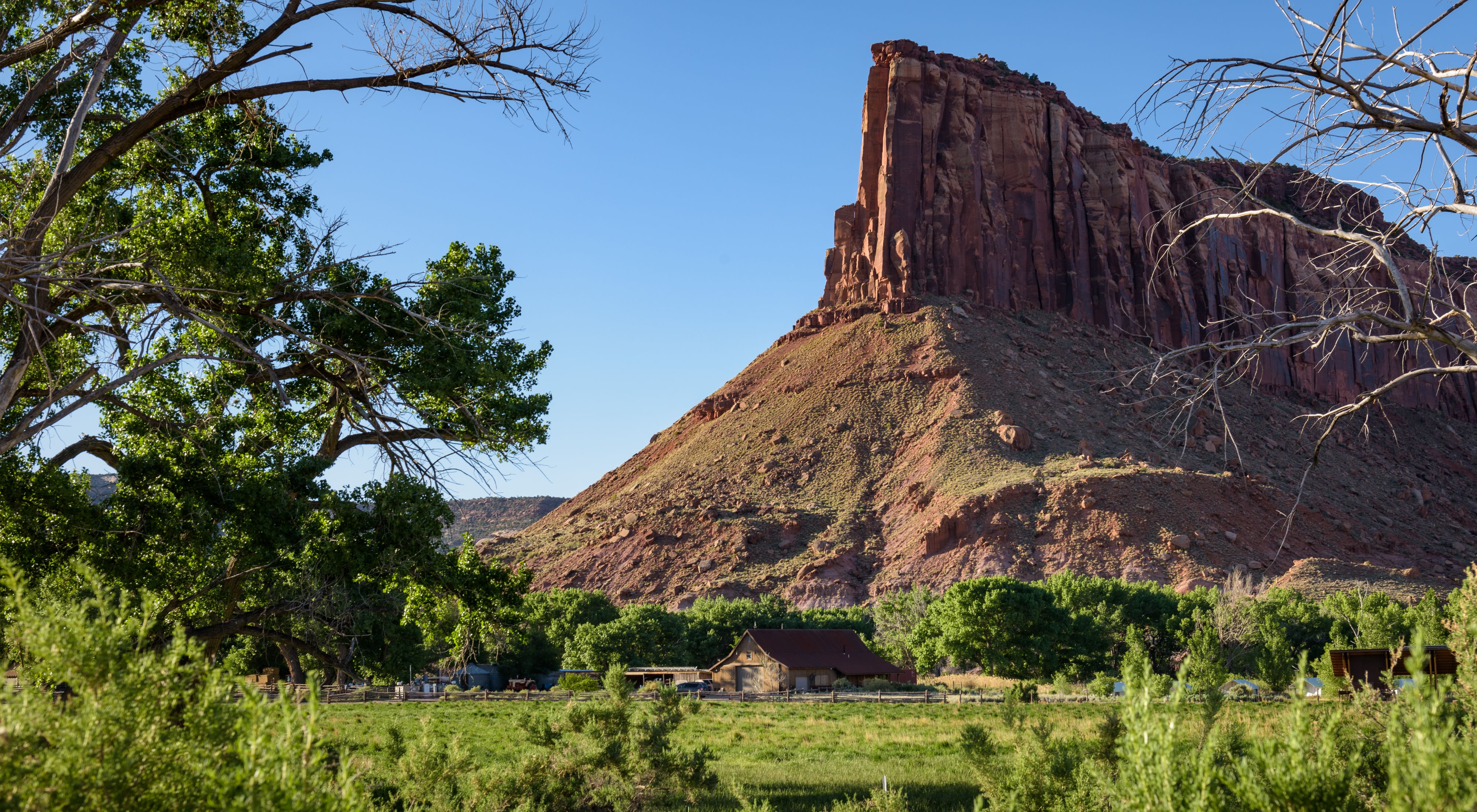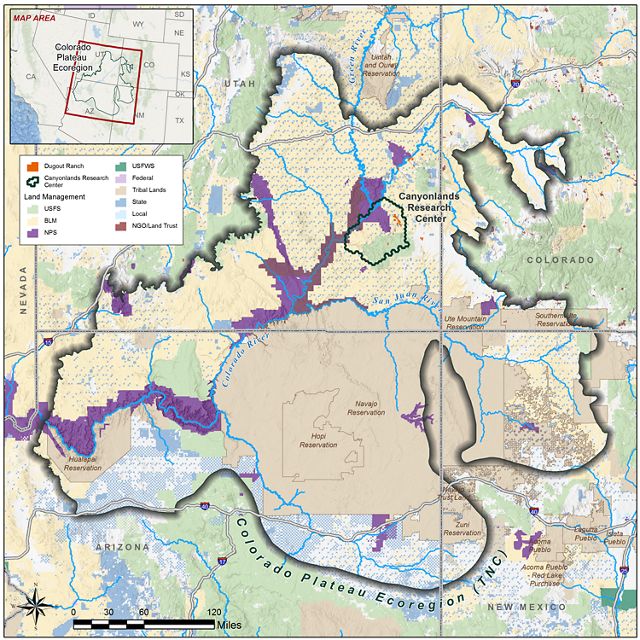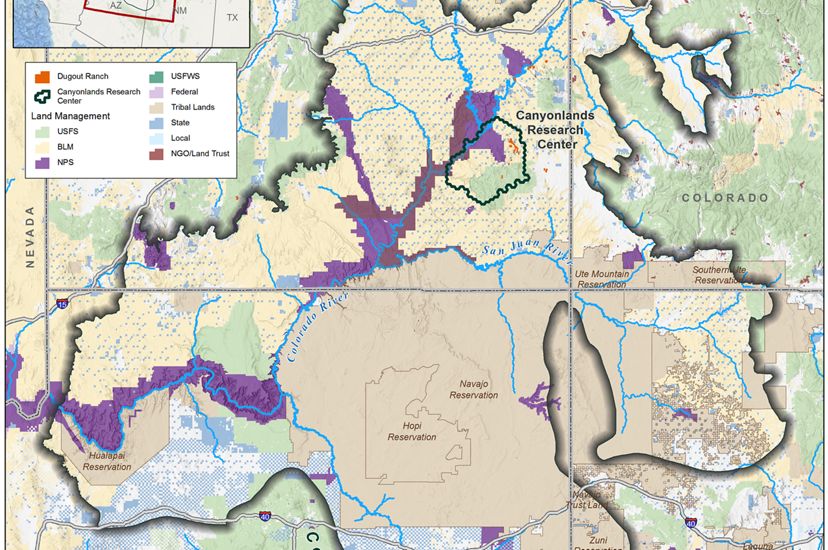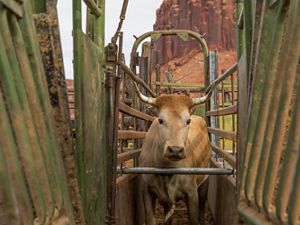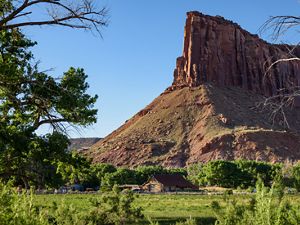Drawn to the Canyonlands
Heidi Redd is a cowgirl in her 70s, still riding the range she loves every day. Nichole Barger is a university professor who finds magic in the arid lands she studies. And María Cristina Rengifo-Faiffer is a young scientist from Peru, who is fascinated by the microscopic richness of the desert soil.
These are three women whose lives and work are shaping the impact of the Canyonlands Research Center (CRC). Based at The Nature Conservancy’s Dugout Ranch, at the gateway to the Needles District of Canyonlands National Park in Utah, the CRC is a ground-breaking collaborative between TNC, universities and public agencies to make key advances in climate science and sustainable land use.
More than a Research Center
From the beginning, the CRC has been fueled by people whose paths become entwined with the spirit of the Colorado Plateau and a concern for its future. Launched 10 years ago, the CRC is now a significant climate change research center, not only for local researchers and land managers, but for scientists from across the United States and around the world.
In the CRC’s vast outdoor laboratory, researchers interact daily with working cowboys and public land managers. Meanwhile, groups of high school and college students learn about research and practices underway to preserve and restore this fragile semi-arid environment.
It’s this special nexus of people, research and traditional land use that brought together three very different women. For Heidi Redd, whose family sold the Dugout to TNC in 1997, and who has lived and worked on the ranch for more than 50 years, the CRC is about fighting to save a way of life.
“Will the land change so much that it cannot support the livestock, beauty, and recreation uses common in the area today?” Redd wonders.
Canyonlands Research Center Goals
- Train undergraduate, graduate and post-graduate students.
- Facilitate research on how multiple users can benefit from and steward the Colorado Plateau.
- Build partnerships and communicate results to the public.
- Manage the ranch and cattle operations sustainably in the face of climate change and new resource management plans.
Quote: Heidi Redd
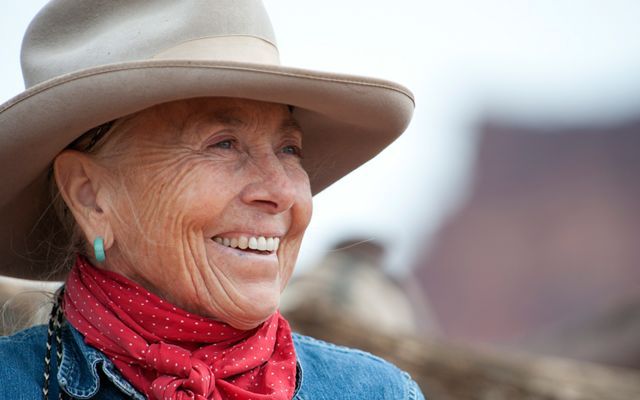
I love that ranchers are working with scientists to help answer these questions and ensure the future of the Dugout Ranch and other places like it on the Colorado Plateau.
For scientists, like Nichole Barger, the CRC’s director of research, and research fellow, María Cristina Rengifo-Faiffer, the CRC and the experience of doing field work amid the stark beauty of the canyonlands has a special draw, leading to a growing and tight-knit scientific community.
“Something that makes the CRC different and unique is that you don’t just have science happening here,” says Rengifo-Faiffer, who studied biocrust at the CRC. “You also have land managers and citizens and the communities involved.”
Climate Change Threatens the Colorado Plateau
Science and ranching aside, all three women found themselves captivated by the magic of the place. “It’s not challenging to engage my grad students to work here,” says Barger, an arid lands ecologist and professor at the University of Colorado. “There’s something deeply moving about these canyon landscapes.”
Heidi Redd, who has lived at the Dugout Ranch since she was 26, agrees. “The spirit of Indian Creek never leaves you. It seeps into you. It isn’t just this surface thing you’re seeing, it’s something you’re feeling as well. All your senses just come alive.”
The Colorado Plateau is a place of mystery and lore. Extremes of color and heat. Intoxicating sky and rock. Ancient cultures. Cowboys and outlaws. Sacred ground. Home to one million people. Recreation mecca.
Spanning approximately 100 million acres, the Plateau sweeps across southern and eastern Utah, northern Arizona, northwestern New Mexico and western Colorado. These are the Canyonlands—a landscape of staggering diversity. Snow-capped mountains loom behind sculptured red-walled canyons and improbable rock formations, spilling open to wide seas of sage and sand with the brightest night skies in the nation.
Today the Plateau is a hotbed of controversy. Competing demands for use, development and protection have put key areas into a high-stakes, politically-charged game of tug of war. And behind the conflict, impervious to who controls the acreage, climate change steadily tightens its grip, threatening to forever alter the viability of unique lands and waters. Climate predictions for this region are dire and the impacts are alrady being felt. Higher temperatures, combined with prolonged droughts, will reduce soil moisture causing a decrease in plant cover and soil stability on lands that are already compromised by human activities.
For Barger, the research happening at the CRC offers the best hope for this region. “We have a community that has come together with a common goal of sustainably managing these lands and conserving them for future generations. That has created a dynamic where we collaborate really well together and collectively get things done.”

We Can’t Fight Climate Change Without You
Sign up to receive monthly news and stories about our research progress. Get a preview of Utah's Nature News email.
Science that Matters
The need to get things done and adapt to a new climate reality has fueled the CRC’s growth over the last 10 years. In 2009, TNC purchased the Dugout Ranch cattle herd, ensuring the cows could be used exclusively to study sustainable grazing issues. In 2011, the research facilities opened, complete with tent cabins, a field lab and a conference room, allowing the CRC to host scientists year-round. Since then, the CRC has served as a hub for research on climate and the restoration of impaired dryland systems, hosting more researchers, projects and school groups each year. Today the CRC supports studies on issues such as biocrust health, invasive species, recreation impacts and wildlife adaptability to climate change.
Rengifo-Faiffer, a native of Peru who became one of the CRC’s first research fellows, knows these studies matter. “In my country, biocrust is not yet well understood or studied,” Rengifo-Faiffer explains. “Here at the CRC, some of the world’s most experienced people are working on biocrust. Forty-percent of the Earth is drylands. I see a huge potential to for my work to make a difference.”
Quote: María Cristina Rengifo

I want to get a better understanding of how to keep ecosystems healthy in the face of the disturbances we are creating, including climate change.
Some of the people who know drylands best are those who make a living from the land. Heidi Redd’s lifetime of knowledge about the region’s vegetation and soils and how they react to heat, drought and human use, is invaluable to scientists at the CRC. “I have dinner at the ranch with Nichole [Barger] and she picks my brain,” laughs Redd. “The scientists are helping us understand how to maintain healthy lands. The goal is to have the ranch’s management tied directly to what’s found in the research.”
Redd also hopes the management lessons will benefit people who live and work the land in the future. “Not all ranchers around here will call what’s happening climate change, but they know the reality of what we’re seeing in the weather and on the ground. We’re going to have to be flexible and find solutions before it’s too late.”
Looking Ahead: CRC Goals
With climate change exacerbating increased land use pressures from ranching, recreation and resource extraction on the Colorado Plateau, finding answers to how humans and nature can sustainably co-exist become ever more urgent.
So what’s in store for the next decade?
In essence, the CRC aims to deliver on four goals:
- Train the next generation of scientists by strengthening science education opportunities for undergraduate, graduate and post-graduate students.
- Facilitate and encourage research that helps to develop a multiple user, multi-institutional research program centered on the Colorado Plateau.
- Build partnerships and communicate results by providing learning opportunities based on knowledge gained from research efforts at the CRC.
- Prepare for a changing world by managing the ranch and cattle operations in a manner that will continue to be sustainable (both ecologically and financially) in the face of climate change and new resource management plans.
But for Redd, Barger and Rengifo-Faiffer, the true hallmark of the CRC is the collaboration. In a region often divided by disputes over land uses and boundaries, the CRC has become a powerful force of unity and shared purpose. Scientific answers and solid data provide a way for people to come together. In the end, keeping this place healthy matters to everyone.
Support TNC's Work Across Utah
We have the right science, partners and projects to help fight climate change and protect other natural wonders in Utah, but we need you.
